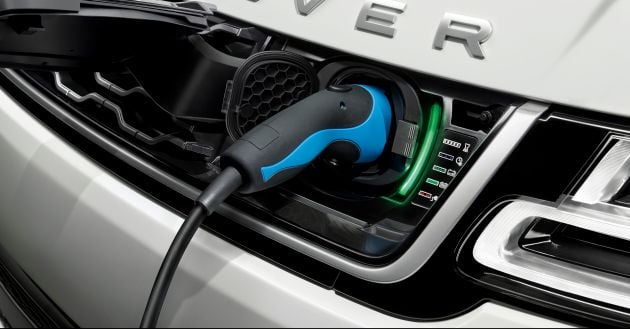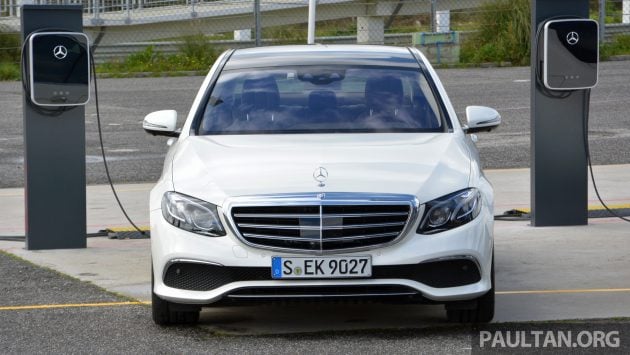It turns out that plug-in hybrid cars are capable of emitting up to three times more carbon dioxide in the real world compared to advertised figures, and some of the cars are even more polluting than lighter petrol vehicles, the Daily Mail reports.
The primary reason for this is because hybrid and plug-in hybrid cars are normally heavier than their petrol counterparts due to the extra weight incurred by having an electric motor and battery pack. This is on top of the fact that PHEV owners sometimes neglect to charge their vehicles, thus losing the benefits of electrification.
The findings come in the wake up the UK government’s plan to hasten the ban on the combustion engine – including hybrid cars – by 2035 (five years quicker than the initial 2040 target). The same series of studies also showed that fuel consumption rates of electrified vehicles are far greater in the real world than in testing conditions.
Transport team leader from the Committee on Climate Change, Ewa Kmietowicz said: “When charged appropriately, plug-in hybrid vehicles allow drivers to complete the majority of trips in all-electric mode. However, there is a concern that PHEVs are not being used as intended, achieving less than one-third of miles in electric mode, and risking higher emissions.”
“By the end of the year, most new models of fully electric vehicle will be able to cover 150 miles (240 km) on a single charge, and the need for plug-in hybrids will inevitably decline,” Kmietowicz added.
A study conducted by The Miles Consultancy, a fuel management firm, found that vehicles produced by BMW, Mercedes-Benz, Mitsubishi, and Volkswagen often returned fuel consumption figures that are up to three times higher than advertised. In fact, 187 regularly-charged BMW PHEVs were audited, and the average fuel economy is only 42 mpg (6.7 litres per 100 km) versus the claimed figure of 137 mpg (2.1 litres per 100 km).
PHEV researches in Norway also did a study in 2018, which found that the average yearly estimated CO2 emission was about 2.5 times higher in the real world, when compared to the value stated in the type approval test, the Telegraph reported.
Plug-in hybrid sales have proven to be popular in recent years, and the numbers will continue to grow. In Europe, for example, analysts predict that sales of PHEVs will increase from 220,000 to 590,000 units this year, partly driven by tax breaks offered to company car owners. In other parts of the world, “greener” cars also benefit from tax breaks as incentives to spur motorist interest.
Experts such as Paul Hollick, the managing director of The Miles Consultancy, questioned whether some plug-in hybrid cars ever get to see a charging cable. “In a lot of cases, we see PHEVs never being charged, doing longer drives and this is not a good fit for a lot of car users,” he said.
One of the UK’s most popular electrified cars is the Mitsubishi Outlander PHEV, but Emissions Analytics boss Nick Molden said “the problem is the official figures are very sensitive to assumptions about how PHEVs are being charged and driven.”
A Mitsubishi spokesperson later said the Outlander PHEV was originally tested for emissions and fuel economy in a fully charged state. “We state in our promotional material that the official figures are only for comparison to similar vehicles and that they may not reflect real-life driving results,” the person added.
Based on Emissions Analytics’ survey, 96% of Mitsubishi PHEV owners claim to charge their cars at least once a week, while 68% said they recharge their cars on a daily basis. Well, if you own a plug-in hybrid car, we suggest charging it whenever and wherever possible.
Closer to home, statistics show that while there are around 5,000 ChargEV members in Malaysia (registration for the local charging network is free, and a membership is provided with every purchase of a BMW PHEV), less than half of them use the chargers regularly. That’s not exactly a stellar figure, especially as Malaysia is a big market for premium PHEVs.
So remember, guys. It’s one thing to buy a plug-in hybrid, but you won’t do anyone any good if you don’t charge it. The weight penalty of a PHEV is significant and, unlike a non-plug-in parallel hybrid, these cars are not designed to be driven without being charged, so petrol-only running is highly inefficient and you’ll be lugging all that extra weight for nothing. In this case, plugging in really goes a long way.
Looking to sell your car? Sell it with Carro.





Every engineering student in first semester can tell you that. Batteries are heavy and need to be accelerated together with the car. This comes at a cost: energy. Why people think Lotus sports cars are only 900kg? Because they want to save the costs for aluminium?
No point arguing with SJW greenie. They’re already been brainwashed and won’t even consider other opinion.
As long as they’re seen to be green and get shout it out on social media.
Saying a car pollutes more when it doesn’t use electricity is like saying it doesn’t pollute if you never fill it with gas. Duh. The author is trying to manipulate weak-minded people into thinking something nefarious is it going on. The article has nothing to do with dishonesty.
Conclusion, human are lazy..
For those who live in highrise will not charge their PHEV at designated charging point that frequent. Finding charging points and leave it for few hours are hassle.. for those live in landed might not charge everyday as well.. they will just put petrol and go which only required once a week or once every 2 weeks.
If you don’t have access to charging facilities, then yeah, get a regular hybrid.
Never believed advertised fuel consumption figures of PHEV vehicles. They only state the fc when running in hybrid mode which only lasts a few kilometers. They never tell the ICE engine only fc
Electric can be sourced by many ways, not only coal or diesel power plant.
There are also
1. Hydro (example.is Bakun)
2. Windmill
3. Solar
4. Neuclear
Which are all non polluting or producing CO2 nor NoX.
And one hour of power plant operation which is equivalent to x amount of cars are still a lot lower than than same number of petrol/diesel cars produce.
Try.
Most local PHEV owners buys hybrid cars because of the price. The convenience of parking at malls charging station and the rights to the statement saying “I am environmentally friendly” are the privileges which comes with it !!!
Confirms my primary suspicion, that hybrid vehicles carry the extra burden of heavy batteries added to their petrol engines. If electric cars don’t drive well at high speeds over long distances (shorter range at high speed) but claim to work better in city mode but wouldn’t the extra weight negate the benefit in stop start traffic?
Petrol engine is polluting, PHEV oso polluting. Better jalan kaki and ride bicycle, badan sihat dan sejahtera. best of all, can jimat duit.
Anyone with even a basic understanding of fuel efficiency and how PHEVs work knows that they don’t return “137 MPG” when operated as hybrids. Are you confusing MPGe with MPG? 42 MPG is an amazing fuel economy for a larger crossover. The higher number is separate. It is applicable when the vehicle is operating in EV mode. It offers an equivalent number to compare to a liquid-fueled vehicle. Of course PHEVs use less fuel when plugged in. If that’s not obvious you don’t have a clue what you are covering.
Carmakers need to stop misleading consumers. They all need to man up and tell consumers that all the great acceleration and consumption figures can only be archieved if their PHEVs are charged on a daily basis.
totally agreed. PHEV should be charge daily to fully utilize its potential and it can achieve all those fuel consumption as advertise if the PHEV owner charge it daily. I’m doing it daily for my PHEV…
This makes no sense, guys!
First, why would anybody buy a PHEV over a regular hybrid equivalent if they don’t both expect to and plan to plug it in most of the time?! My own PHEV has been operating for nearly 3 years >95% electric, driving in town.
Second, a Toyota Prius Prime (AKA Prius PHV, plug-in hybrid) weights about 4% more than a Prius 4 (regular hybrid), and they *the same* rated MPG on gas: 54MPG, in US gallons, or ~65MPG in UK gallons, on the US-EPA test cycle, which is in fact pretty much what I see on ours. The comparison is pretty similar for Hyundai Ioniq Hybrid and Plug-in Hybrid models.
Third, “batteries are heavy”: Well, OK. But a BMW 328i (i.e., pure-gasoline car) weighs 3582-3764lbs, and a Tesla Model 3, a pure-electric car of roughly comparable size, weighs 3552-4100lbs. Heavier? Yes. Vastly heavier? No.
A 2018 Chevrolet Volt (AKA Opel Ampera) got a combined US-EPA MPG rating of 42MPG (US) driving on gas. Its pure-gasoline closest-equivalent got 31MPG city and 47MPG highway. Not much different there!
Also, remember that weight on a car with regenerative breaking is not nearly as huge a disadvantage as on a pure-gasoline car. You burn more energy to accelerate, but you gain back more when you brake a fair percentage of that energy right back into the battery.
What happens to horsepower if the battery in a phev is depleted? Is it just the hp of the combustion engine? Looking at Hyundai Santa Fe phev 191 hp 1.6 liter turbo electric motor additional 90 hp for total 261 hp. What happens to total horsepower if battery is depleted?